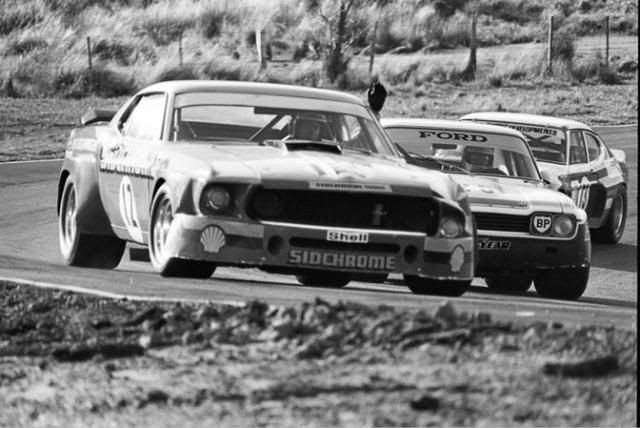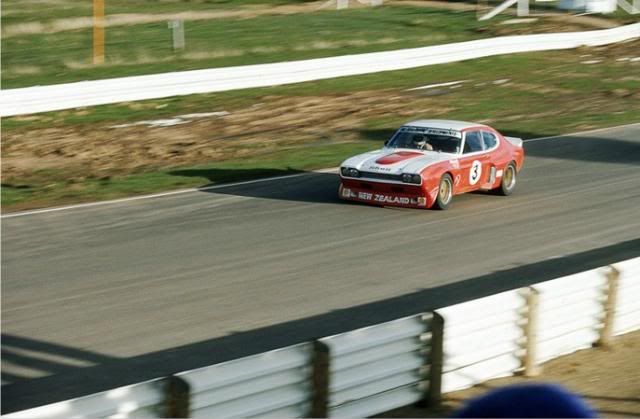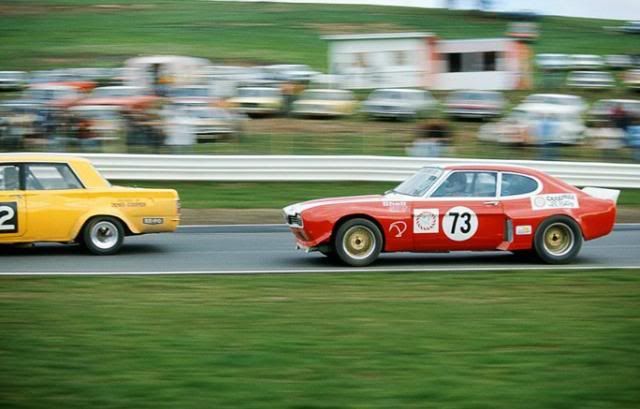In New Zealand, in late 1973, multiple national Saloon Car Champion Paul Fahey appeared at the Bay Park Christmas event with a Ford Capri RS2600, a Group 2 factory race car that had been campaigned throughout that year in the European Touring Car Championship, and driven by the likes of Jody Scheckter, Jackie Stewart, Jochen Mass, John Fitzpatrick, Gerard Larrousse, Dieter Glemser, and others, as part of a multi-car effort. The Capri caused a sensation up and down pit lane, as although its imminent arrival on the local NZ racing scene was the worst kept secret of the year, by the time it appeared, in the flesh it was unlike anything seen before in New Zealand.
From the late 1960s, New Zealand sedan racing had been dominated by American V8 powered machinery. These popular thundering dinosaurs had ruled the roost almost without exception since international FIA Group 5 regulations had been introduced in 1967. Although the rules were being tweaked constantly, so the American iron kept on winning, barring a single year blip in 1971 when Fahey slayed the big cars with his highly effective 1,800cc FVC Alan Mann Escort.
But here at Bay Park sat a new challenger. The gleaming white Capri was adorned with signage from Air New Zealand, but it looked very European, and drew a huge crowd all weekend. Garnering the most attention were the strange looking box-flares, the likes of which hadn’t been seen in New Zealand before. Indeed, within twelve months, most of the big banger V8 artillery would have similar flares grafted into their bodywork, but on its arrival in 1973, this was all new and exciting. Also gaining lots of attention were the 16” diameter wheels. Again, 16” diameter wheels on a sedan racer were unheard of in New Zealand. But beneath the skin, Fahey’s new racer also featured some very sophisticated technology.
The Capri was powered by a Weslake R&D developed version of the 2,637cc Cologne V6, stretched to nearly 3,000cc, with alloy heads and Kugelfischer fuel-injection, and backed by a 5-speed ZF gearbox, with Atlas diff. Power was around 330hp. The 16” diameter wheels measured 12” front, and 14” rear widths. Total dry weight was just over 970kg. Technically, the Fahey Capri was eligible to compete in the 4.2 litre category of the NZ Saloon Car Championship, but the reality was, at many tracks, it was an outright contender, and on occasion would show the V8s the way home.
At seasons end, the Fahey Capri came up short against its V8 rivals. The basic nature of many New Zealand race tracks, featuring long straights and low speed corners, better suited the V8 torque monsters than the less powerful Capri, which had been designed for the high speed European race tracks, with their fast flowing corners, where momentum was king.
But while Fahey battled the V8s in New Zealand throughout that 1973/74 season, back in Europe, the RS2600’s successor, the Capri RS3100, was being created. Group 2 rules required just 250 road going examples of a make and model be produced to homologate it for racing. At that, Ford dutifully built its 250 Capri RS3100 models, fitted with a 3,098cc Essex V6 engine, and tall rear spoiler. Additionally, Group 2 cylinder heads and fuel systems were free, in that they didn’t have to be sold on road going vehicles to be homologated, but 100 examples were required to be produced.




 Reply With Quote
Reply With Quote





